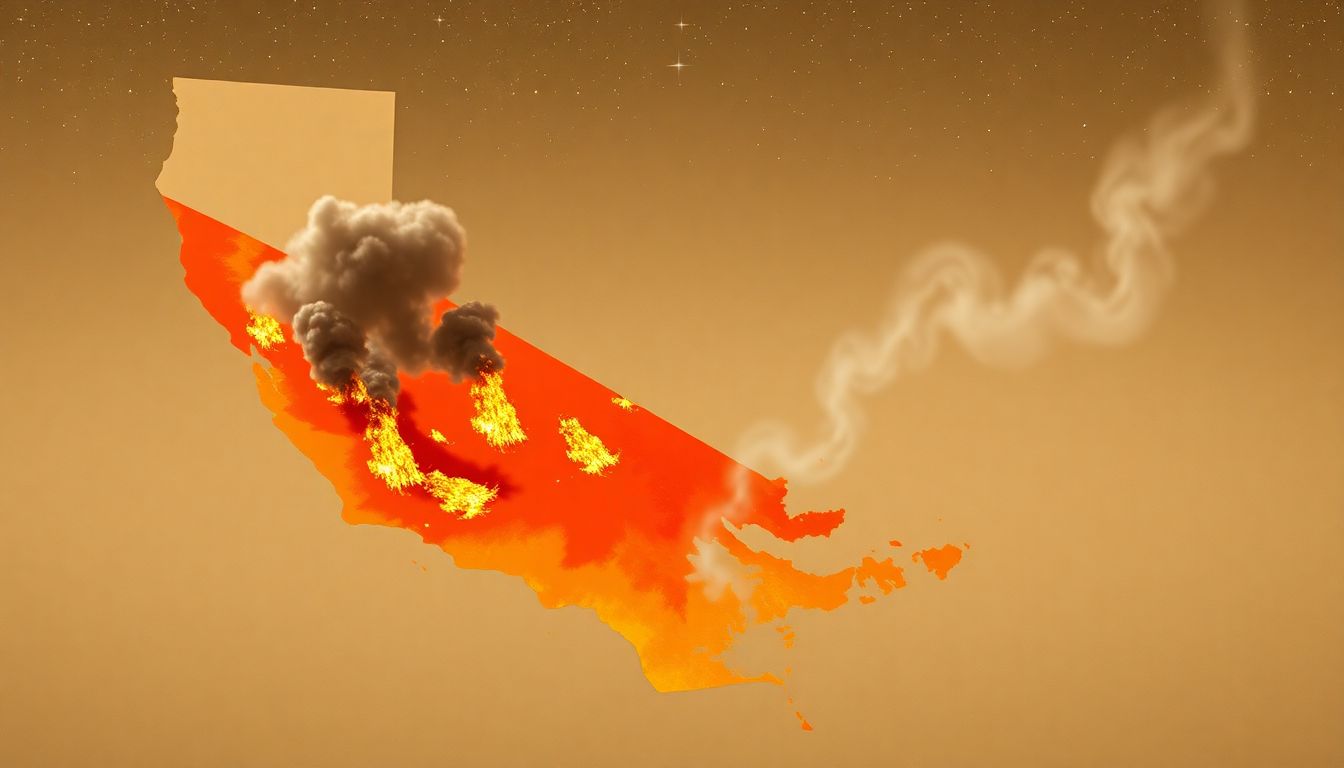
California Fires: Real-Time Map and Current Wildfire Updates
California faces an ongoing wildfire crisis that threatens both lives and property. With the landscape often drier than usual, the risk of fires grows every year. Understanding the situation is critical. A real-time map tracking these fires provides valuable insights.
The Growing Threat: Understanding the Scale of California's Wildfire Problem
Wildfires in California have become more frequent and intense. Over the past few decades, the state has seen a sharp rise in burnt land. According to the California Department of Forestry and Fire Protection, nearly 4 million acres were scorched in 2020 alone.
Human Impact and Economic Losses: A Look at the Numbers
- Thousands of families have been displaced due to evacuation orders.
- Property losses run into the billions, affecting homes, businesses, and natural resources.
Keeping count of these events shows the urgent need for preparedness.
The Need for Up-to-Date Information: Why a Reliable Fire Map is Crucial
Wildfires can spread rapidly. Staying informed is essential. A reliable map can:
- Show active fires
- Indicate containment levels
- Highlight evacuation zones
This information is vital for the safety of residents and effective response by emergency services.
Understanding the California Wildfire Map
Navigating a wildfire map can seem daunting. It involves interpreting various data points effectively.
Interpreting the Data: Color Codes, Symbols, and Key Information
Maps often use color codes to indicate fire severity. Common color representations include:
- Red: Active fire
- Yellow: Warning area
- Green: Cleared zones
Familiarity with these symbols helps in taking appropriate actions.
Accessing Reliable Resources: Official Government Websites and Mobile Apps
Several official sources provide up-to-date information, including:
- CAL FIRE: Offers maps and data on wildfires.
- InciWeb: A comprehensive resource for incident information.
Mobile apps also exist, making it easier to stay connected on-the-go.
Limitations of Fire Maps: What They Can and Cannot Show
While maps are incredibly useful, they have limitations. For example, they might not show:
- Local wind conditions
- Detailed terrain features
- Specific residential risks
Understanding these gaps helps in preparing better.
Current Wildfire Incidents: A State-by-State Overview
Wildfires impact different areas of California in unique ways. Here’s a look at the current situation.
Northern California Fires: Recent Events and Impact
In Northern California, the past few seasons have seen devastating fires, affecting communities and local wildlife. These incidents often lead to extensive evacuations and long recovery processes.
Southern California Fires: Ongoing Challenges and Prevention Efforts
Southern California faces unique challenges. The dry Santa Ana winds can escalate fires quickly. Ongoing prevention efforts aim to reduce hazards, but vigilance remains crucial.
Central California Fires: Regional Trends and Prevention Strategies
Central California often experiences agricultural impacts due to wildfire smoke. Strategies focusing on local land management can help mitigate future occurrences.
Factors Contributing to California Wildfires
A mix of elements fuels the wildfire crisis in California.
Climate Change and Extreme Weather: The Role of Drought and Heatwaves
Increasing temperatures and prolonged droughts have made fire seasons longer and more severe. These conditions create fertile ground for wildfires to ignite and spread.
Human Activities and Ignition Sources: Accidental and Deliberate Causes
Many fires spark from human activity, whether accidental or intentional. Common sources include:
- Downed power lines
- Campfires left unattended
- Arson
Awareness is key to reducing these risks.
Fuel Load Management: The Importance of Forest Health and Prevention
Proper management of forests helps reduce the fuel available for wildfires. Utilizing controlled burns can clear out excess underbrush. This practice supports healthier ecosystems.
Staying Safe During Wildfire Season
Planning and preparation can be lifesavers during wildfire season.
Developing an Evacuation Plan: Preparing Your Family and Home
Create a clear evacuation route and gather essential items beforehand. Keep important documents and medications easily accessible.
Staying Informed: Utilizing Alerts and Following Official Updates
Regularly check updates through official channels. Alerts can offer crucial information about fire risks and evacuation orders.
Protecting Your Property: Simple Steps to Reduce Fire Risk
Take proactive steps to safeguard your home. Simple actions include:
- Clearing brush and debris away from structures.
- Using fire-resistant materials for roofing and siding.
Resources and Prevention Efforts
Resources are available to help communities prepare and respond effectively.
Government Agencies and Support Services: Accessing Aid and Information
Local fire departments provide essential information and support services. Agencies like FEMA can assist in recovery after a fire.
Community-Based Initiatives: Volunteer Groups and Local Programs
Get involved with local programs aimed at fire prevention. Many communities engage in organized preparedness training and restoration projects.
Long-Term Solutions: Investing in Fire Prevention and Mitigation
Investment in infrastructure and fire-resistant landscaping can significantly reduce risks. Growing awareness fosters a culture of prevention.
Conclusion: Staying Vigilant and Informed in the Face of Wildfire Danger
Continued education and action are vital for wildfire preparedness.
Key Takeaways: The Importance of Preparedness and Community Action
Understanding your surroundings and knowing how to act can save lives and properties.
Looking Ahead: Continued Efforts in Prevention and Response
Collaboration across communities is essential. Keeping dialogue open among residents, firefighters, and local officials helps us all stay safe.
Call to Action: Supporting Firefighters and Disaster Relief Organizations
Support your local firefighters and relief organizations. Volunteer time or donate resources to aid in their crucial work. Together, we can combat the wildfire threat effectively.
https://newfactsonly.blogspot.com/
.png)
.png)
.png)
